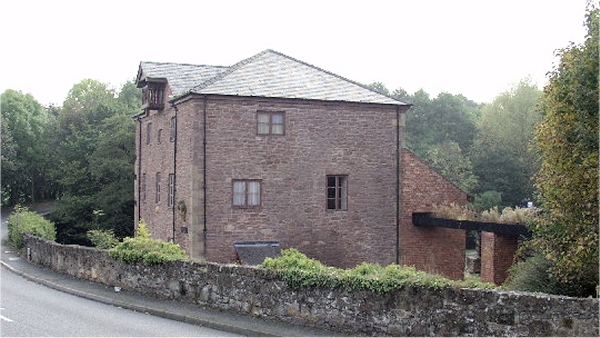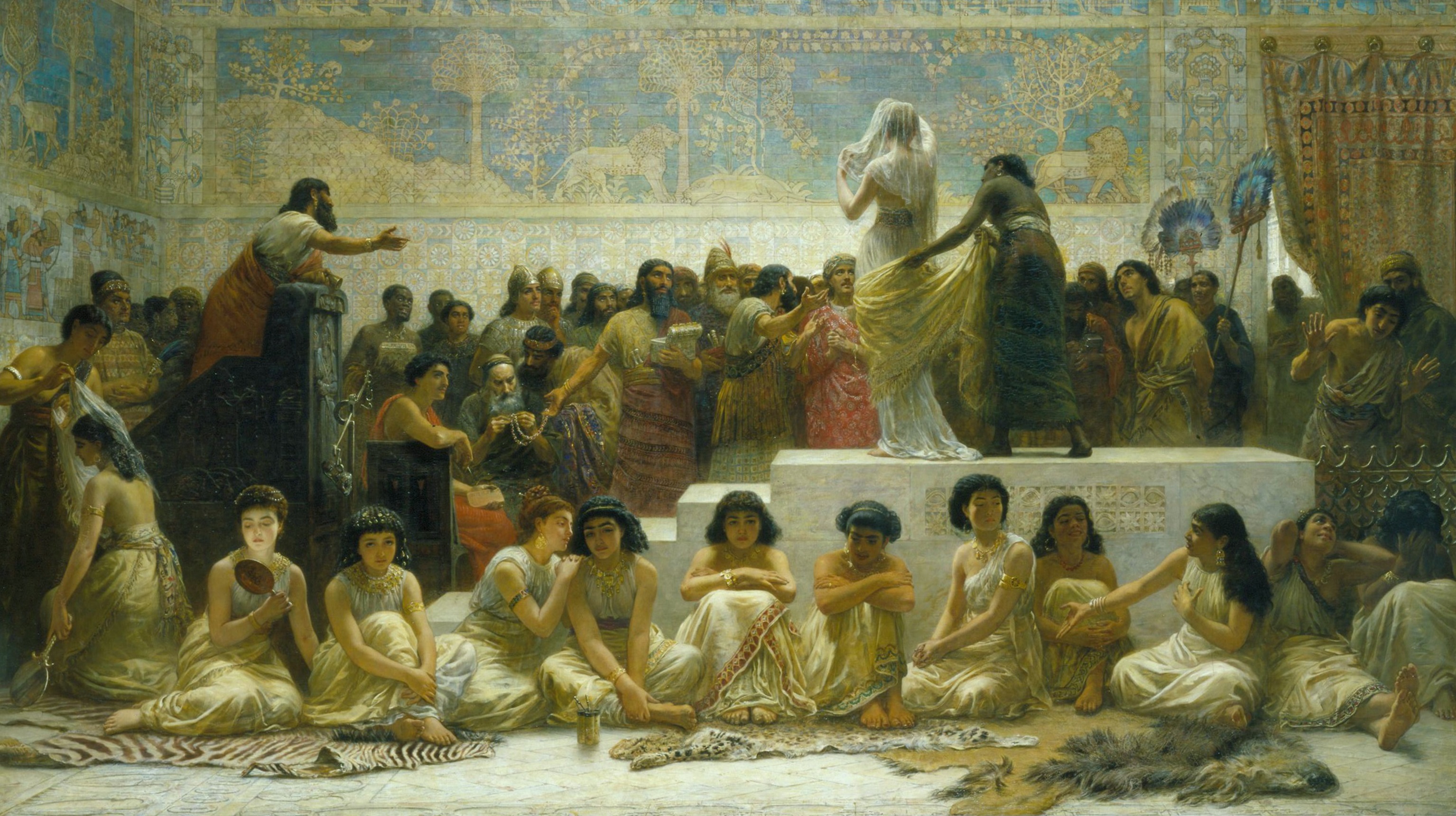|
Overton Arcade
The Overton Arcade is a shopping arcade in Wrexham city centre, Wales. Built in 1868 and opening in 1869, the arcade connects Wrexham's High Street to Temple Row which passes along the churchyards of St Giles' Church. It is named after its proprietor William Overton and not the nearby village of Overton (also known as Overton-on-Dee). Description and history The arcade was built in 1868, and opened in 1869, It is named after the proprietor William Overton, who had served as mayor of Wrexham. It connects Wrexham's High Street to the churchyard of St Giles' Church. The arcade's side facing the High Street is made of brick from the Ponkey Brick and Tile Company, and with stone dressings from the Dennis's Cefn quarries. The overall design of the arcade was described, when it opened in 1869, as "plain, with very little attempt at ornamentation", with the exception of flowers and fruits carved into the keystones present over the arcade's windows. The building rises , with the r ... [...More Info...] [...Related Items...] OR: [Wikipedia] [Google] [Baidu] |
Wrexham
Wrexham ( ; cy, Wrecsam; ) is a city and the administrative centre of Wrexham County Borough in Wales. It is located between the Welsh mountains and the lower Dee Valley, near the border with Cheshire in England. Historically in the county of Denbighshire, and later the county of Clwyd in 1974, it has been the principal settlement of Wrexham County Borough since 1996. Wrexham has historically been one of the primary settlements of Wales. At the 2011 Census, it had an urban population of 61,603 as part of the wider Wrexham built-up area which made it Wales's fourth largest urban conurbation and the largest in north Wales. The city comprises the local government communities of Acton, Caia Park, Offa and Rhosddu. Wrexham's built-up area extends further into villages like Bradley, Brymbo, Brynteg, Gwersyllt, New Broughton, Pentre Broughton and Rhostyllen. Wrexham was likely founded prior to the 11th century and developed in the Middle Ages as a regional centre fo ... [...More Info...] [...Related Items...] OR: [Wikipedia] [Google] [Baidu] |
Shopping Arcade
A shopping center (American English) or shopping centre (Commonwealth English), also called a shopping complex, shopping arcade, shopping plaza or galleria, is a group of shops built together, sometimes under one roof. The first known collections of retailers under one roof are public markets, dating back to ancient times, and Middle Eastern covered markets, bazaars and souqs. In Paris, about 150 covered passages were built between the late 18th century and 1850, and a wealth of shopping arcades were built across Europe in the 19th century. In the United States, the widespread use of the automobile in the 1920s led to the first shopping centers of a few dozen shops that included parking for cars. Starting in 1946, larger, open air centers anchored by department stores were built (sometimes as a collection of adjacent retail properties with different owners), then enclosed shopping malls starting with Victor Gruen's Southdale Center near Minneapolis in 1956. A shopping ma ... [...More Info...] [...Related Items...] OR: [Wikipedia] [Google] [Baidu] |
Wrexham City Centre
Wrexham city centre is the administrative, cultural and historic city centre of Wrexham, in North Wales and is the area enclosed by the inner ring road of the city. It is the largest shopping area in north and mid Wales, and the administrative centre of Wrexham County Borough. Many of its streets are pedestrianised. Geography The area encompassed by the inner ring road is Grosvenor Road, Powell Road, Bodhyfryd, St. Georges Crescent (The Beast Market), Smithfield Road, Eagles Meadow, Salop Road, St Giles Way, Pen-Y-Bryn, Ruthin Road, Bradley Road and Watery Road. It is primarily urban in nature, with the exception of the city centre's largest green space at Belle-Vue Park. The area is predominantly non-residential, notable exceptions being Eagles Meadow and around Parciau. History The city centre is Wrexham's medieval core, and as such contains most of its history. The city centre expands outwards from the hill top St. Giles Church, which itself is surrounded by a number o ... [...More Info...] [...Related Items...] OR: [Wikipedia] [Google] [Baidu] |
St Giles' Church, Wrexham
St Giles' Parish Church ( cy, Eglwys San Silyn) is the parish church of Wrexham, Wales. The church is recognised as one of the finest examples of ecclesiastical architecture in Wales and is a Grade I listed building, described by Sir Simon Jenkins as 'the glory of the Marches' and by W. D. Caröe as a “glorious masterpiece.” The iconic 16th-century tower rises to a height of 136 feet and is a local landmark that can be seen for many miles around. It forms one of the 'Seven Wonders of Wales'. St Giles' occupies a site of continuous Christian worship for at least 800 years. The main body of the current church was built at the end of the 15th century and beginning of the 16th centuries. It is widely held to be among the greatest of the medieval buildings still standing in Wales. The church contains numerous works of note including decorative carvings and statuary dating from the 14th century, monuments by Roubiliac and Woolner, a stained-glass window attributed to Burne-Jones ... [...More Info...] [...Related Items...] OR: [Wikipedia] [Google] [Baidu] |
Overton, Wrexham
Overton ( cy, Owrtyn) or Overton-on-Dee is a village and community in Wrexham County Borough, Wales. It is situated close to the Welsh-English border on the edge of an escarpment that winds its way around the course of the River Dee, from which Overton-on-Dee derives its name. The community of Overton, which also includes the village of Lightwood Green and a number of small hamlets including Knolton, had a total population of 1,276 at the 2001 census,Overton Community Office for National Statistics increasing to 1,382 at the 2011 Census. Geography Overton is from |
Mayor Of Wrexham
The mayor of Wrexham is the civic figurehead and first citizen of the city of Wrexham, and Wrexham County Borough in the north of Wales. The position is elected by members of Wrexham County Borough Council at their annual meeting, and today, holders of the position mainly serve a one-year term. The position is currently held by Councillor Brian Cameron of Whitegate, accompanied by Mayoress Kerry Cameron. Background Before the establishment of the position in 1857, the then town of Wrexham was largely administered by the manorial courts of the gentry and parish Vestry. The manorial courts became overwhelmed with the increasing local government responsibilities placed on them, with the Vestry increasingly adding secular matters to their originally religious operations to compensate the manorial courts. By 1848, concerns over the system of various local government in managing the growing town's sanitary conditions, in particular the public health threat of cholera, led to locals ... [...More Info...] [...Related Items...] OR: [Wikipedia] [Google] [Baidu] |
Cornice
In architecture, a cornice (from the Italian ''cornice'' meaning "ledge") is generally any horizontal decorative moulding that crowns a building or furniture element—for example, the cornice over a door or window, around the top edge of a pedestal, or along the top of an interior wall. A simple cornice may be formed just with a crown, as in crown moulding atop an interior wall or above kitchen cabinets or a bookcase. A projecting cornice on a building has the function of throwing rainwater free of its walls. In residential building practice, this function is handled by projecting gable ends, roof eaves and gutters. However, house eaves may also be called "cornices" if they are finished with decorative moulding. In this sense, while most cornices are also eaves (overhanging the sides of the building), not all eaves are usually considered cornices. Eaves are primarily functional and not necessarily decorative, while cornices have a decorative aspect. A building's project ... [...More Info...] [...Related Items...] OR: [Wikipedia] [Google] [Baidu] |
Auctioneers
An auction is usually a process of buying and selling goods or services by offering them up for bids, taking bids, and then selling the item to the highest bidder or buying the item from the lowest bidder. Some exceptions to this definition exist and are described in the section about different types. The branch of economic theory dealing with auction types and participants' behavior in auctions is called auction theory. The open ascending price auction is arguably the most common form of auction and has been used throughout history. Participants bid openly against one another, with each subsequent bid being higher than the previous bid. An auctioneer may announce prices, while bidders submit bids vocally or electronically. Auctions are applied for trade in diverse contexts. These contexts include antiques, paintings, rare collectibles, expensive wines, commodities, livestock, radio spectrum, used cars, real estate, online advertising, vacation packages, emission trading, and ... [...More Info...] [...Related Items...] OR: [Wikipedia] [Google] [Baidu] |
Estate Agents
An estate agent is a person or business that arranges the selling, renting, or management of properties and other buildings. An agent that specialises in renting is often called a letting or management agent. Estate agents are mainly engaged in the marketing of property available for sale, and a solicitor or licensed conveyancer is used to prepare the legal documents. In Scotland, however, many solicitors also act as estate agents, a practice that is rare in England and Wales. 'Estate agent' remains the current title for the person responsible for the management of one group of privately owned, all or mostly tenanted properties under one ownership. Alternative titles are factor, steward, or bailiff, depending on the era, region, and extent of the property concerned. Origin The term originally referred to a person responsible for managing a landed estate, while those engaged in the buying and selling of homes were "''House Agents''", and those selling land were "Land Agents" ... [...More Info...] [...Related Items...] OR: [Wikipedia] [Google] [Baidu] |
Apartment
An apartment (American English), or flat (British English, Indian English, South African English), is a self-contained housing unit (a type of residential real estate) that occupies part of a building, generally on a single story. There are many names for these overall buildings, see below. The housing tenure of apartments also varies considerably, from large-scale public housing, to owner occupancy within what is legally a condominium ( strata title or commonhold), to tenants renting from a private landlord (see leasehold estate). Terminology The term ''apartment'' is favored in North America (although in some cities ''flat'' is used for a unit which is part of a house containing two or three units, typically one to a floor). In the UK, the term ''apartment'' is more usual in professional real estate and architectural circles where otherwise the term ''flat'' is used commonly, but not exclusively, for an apartment on a single level (hence a 'flat' apartment). In some ... [...More Info...] [...Related Items...] OR: [Wikipedia] [Google] [Baidu] |
Buildings And Structures In Wrexham
A building, or edifice, is an enclosed structure with a roof and walls standing more or less permanently in one place, such as a house or factory (although there's also portable buildings). Buildings come in a variety of sizes, shapes, and functions, and have been adapted throughout history for a wide number of factors, from building materials available, to weather conditions, land prices, ground conditions, specific uses, prestige, and aesthetic reasons. To better understand the term ''building'' compare the list of nonbuilding structures. Buildings serve several societal needs – primarily as shelter from weather, security, living space, privacy, to store belongings, and to comfortably live and work. A building as a shelter represents a physical division of the human habitat (a place of comfort and safety) and the ''outside'' (a place that at times may be harsh and harmful). Ever since the first cave paintings, buildings have also become objects or canvasses of much art ... [...More Info...] [...Related Items...] OR: [Wikipedia] [Google] [Baidu] |

.jpg)

_-_Philip_Yorke_II_(1849–1922)%2C_as_Mayor_of_Wrexham_-_1151384_-_National_Trust.jpg)


